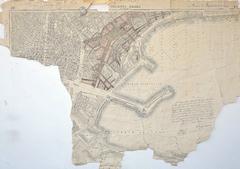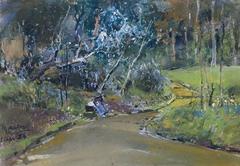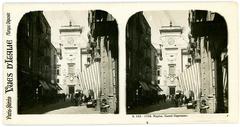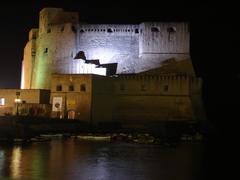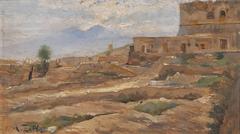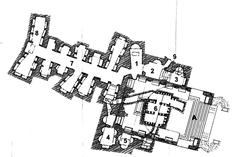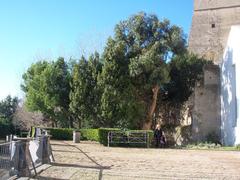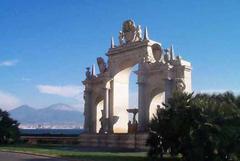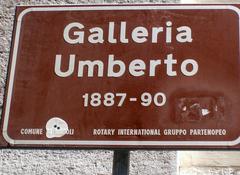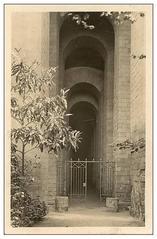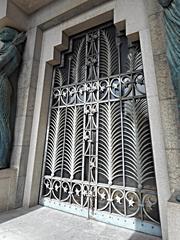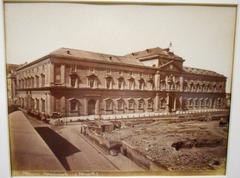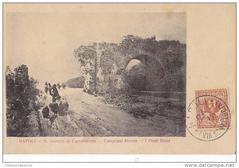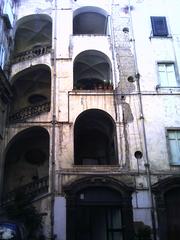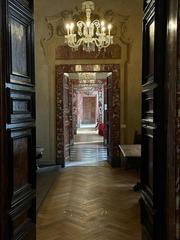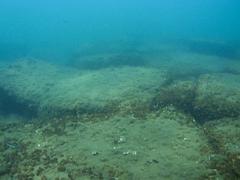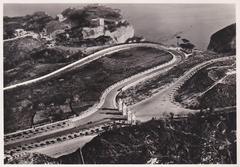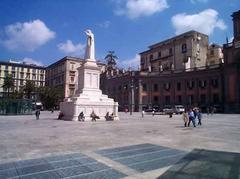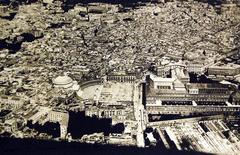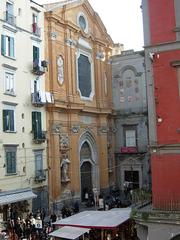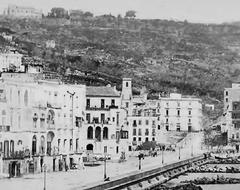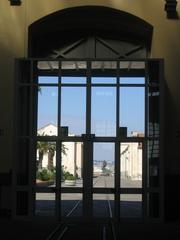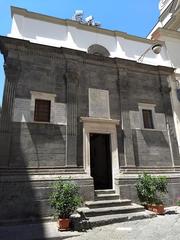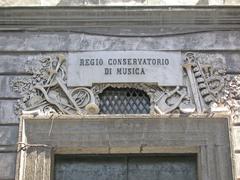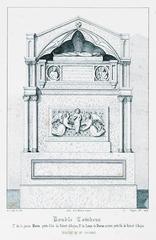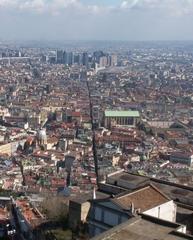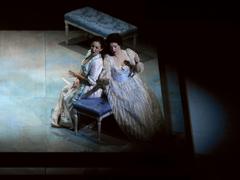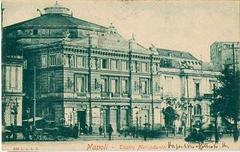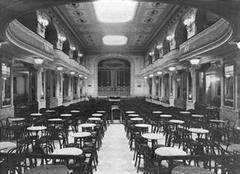
Visiting Hours, Tickets, and Guide to Palazzo Reale, Naples, Italy
Publication Date: 18/07/2024
Introduction to the Palazzo Reale
Nestled in the heart of Naples, the Palazzo Reale, or Royal Palace, stands as a monumental testament to the city’s rich and diverse history. Constructed in the early 17th century under the commission of the Spanish Viceroy Fernando Ruiz de Castro, the palace initially served as a grand residence for King Philip III of Spain. Renowned architect Domenico Fontana spearheaded its construction, infusing Renaissance architectural elements characterized by symmetry, proportion, and classical components such as columns and pilasters (Naples Royal Palace). Over centuries, the palace evolved under various rulers, each leaving an indelible mark on its structure and design. The Bourbon era, in particular, saw significant Baroque influences introduced by architect Luigi Vanvitelli, including the grand staircase and the Royal Chapel (Vanvitelli’s Works). Today, the Palazzo Reale is not just a museum but a vibrant cultural hub that offers visitors a glimpse into the opulent lifestyle of Neapolitan royalty and continues to enrich the cultural fabric of Naples (Modern Significance). This comprehensive guide aims to provide an in-depth look at the history, architectural evolution, and practical visitor information for those planning to explore this historical marvel.
Table of Contents
- Introduction
- History of Palazzo Reale, Naples
- Modern-Day Significance
- Notable Features and Artworks
- Visitor Information
- Preservation Efforts
- FAQ
- Conclusion
History of Palazzo Reale, Naples
Early Conception and Construction
The Palazzo Reale stands as a testament to Naples’ rich historical tapestry. Commissioned by the Spanish Viceroy Fernando Ruiz de Castro in the early 17th century, the palace was intended to serve as a grand residence for King Philip III of Spain. Renowned architect Domenico Fontana began construction in 1600, influenced by Renaissance architectural style, characterized by symmetry, proportion, and classical elements such as columns and pilasters (Naples Royal Palace).
Architectural Evolution
Over the centuries, the Palazzo Reale underwent several modifications and expansions. In the 18th century, under Charles III of Spain, the palace saw significant Baroque influences. Architect Luigi Vanvitelli added the grand staircase and the Royal Chapel, masterpieces of Baroque architecture (Vanvitelli’s Works).
The Bourbon Era
During the Bourbon dynasty, which ruled Naples from the mid-18th century until the unification of Italy in the 19th century, the palace became a hub of political and cultural activity. King Ferdinand IV, a Bourbon monarch, extensively used the palace as his royal residence. The interiors were adorned with frescoes, tapestries, and furnishings, particularly the opulent Throne Room (Bourbon Influence).
The Unification of Italy
The unification of Italy in 1861 marked a new chapter for the Palazzo Reale. The palace became one of the royal residences of the House of Savoy. King Victor Emmanuel II and his successors used the palace during their visits to Naples, and further renovations were undertaken to accommodate the needs of the Savoy family (Italian Unification).
World War II and Post-War Restoration
The tumultuous years of World War II brought significant challenges to the Palazzo Reale, including damage during Allied bombings. Post-war restoration efforts aimed to preserve this historical monument, recognizing its cultural and historical significance (WWII Impact).
Modern-Day Significance
Today, the Palazzo Reale stands as a symbol of Naples’ rich history and cultural heritage. Serving as a museum, it offers visitors a glimpse into the opulent lifestyle of Neapolitan royalty. The palace’s grand halls, royal apartments, and the stunning Royal Chapel are open to the public and host various cultural events and exhibitions (Modern Significance).
Notable Features and Artworks
The Palazzo Reale is home to numerous notable features and artworks, including the grand staircase by Luigi Vanvitelli and the intricately decorated Royal Chapel. The palace’s extensive art collection includes works by renowned artists such as Luca Giordano and Francesco De Mura. The Throne Room stands out for its lavish decorations and grandiose design (Artworks and Features).
Visitor Information
Visiting Hours and Tickets
The Palazzo Reale is open to visitors from 9:00 AM to 8:00 PM daily, except on Wednesdays when it is closed. Tickets can be purchased online or at the entrance. General admission is €10, with discounts available for students and seniors (Visitor Information).
Travel Tips and Accessibility
The palace’s central location makes it easily accessible by public transport. Visitors are encouraged to wear comfortable shoes as there is a lot to explore. The palace is wheelchair accessible, with ramps and elevators available for those with mobility issues.
Nearby Attractions
While visiting the Palazzo Reale, consider exploring nearby attractions such as the Naples National Archaeological Museum, Castel Nuovo, and the historic Spaccanapoli district.
Special Events and Guided Tours
The Palazzo Reale hosts various special events and exhibitions throughout the year. Guided tours are available in multiple languages, providing in-depth insights into the palace’s history and architecture. Photography is allowed in most areas, making it a great spot for capturing memorable moments.
Preservation Efforts
Preserving the historical and architectural integrity of the Palazzo Reale is an ongoing effort. The Italian government, along with various cultural organizations, continues to invest in the maintenance and restoration of the palace. Modern preservation techniques, combined with traditional craftsmanship, are employed to maintain the palace’s structural and aesthetic integrity (Preservation Efforts).
FAQ
Q: What are the Palazzo Reale visiting hours? A: The palace is open from 9:00 AM to 8:00 PM daily, except on Wednesdays.
Q: How much are the tickets to Palazzo Reale? A: General admission is €10, with discounts for students and seniors.
Q: Is the Palazzo Reale wheelchair accessible? A: Yes, the palace is wheelchair accessible with ramps and elevators.
Q: Are guided tours available? A: Yes, guided tours are available in multiple languages.
Conclusion
In summary, the Palazzo Reale in Naples is not just a historical monument but a living testament to the city’s rich and diverse history. From its early conception in the 17th century to its modern-day significance, the palace has witnessed and adapted to the changing tides of history. Its architectural grandeur, historical significance, and cultural heritage make it a must-visit destination for anyone exploring Naples. Don’t forget to check out the visiting hours and ticket information to make the most of your visit. Follow us on social media for more updates and travel tips!
Sources and Further Reading
- Visiting Palazzo Reale in Naples - History, Tickets, and Visitor Information, 2024 https://www.naplesroyalpalace.com
- Discover the Majesty of Palazzo Reale in Naples - History, Tickets, and Visiting Hours, 2024 https://www.coopculture.it/en/heritage.cfm?id=6
- Ultimate Guide to Visiting Palazzo Reale, Naples - Hours, Tickets, Tips, and More, 2024 https://www.coopculture.it/en/heritage.cfm?id=6


